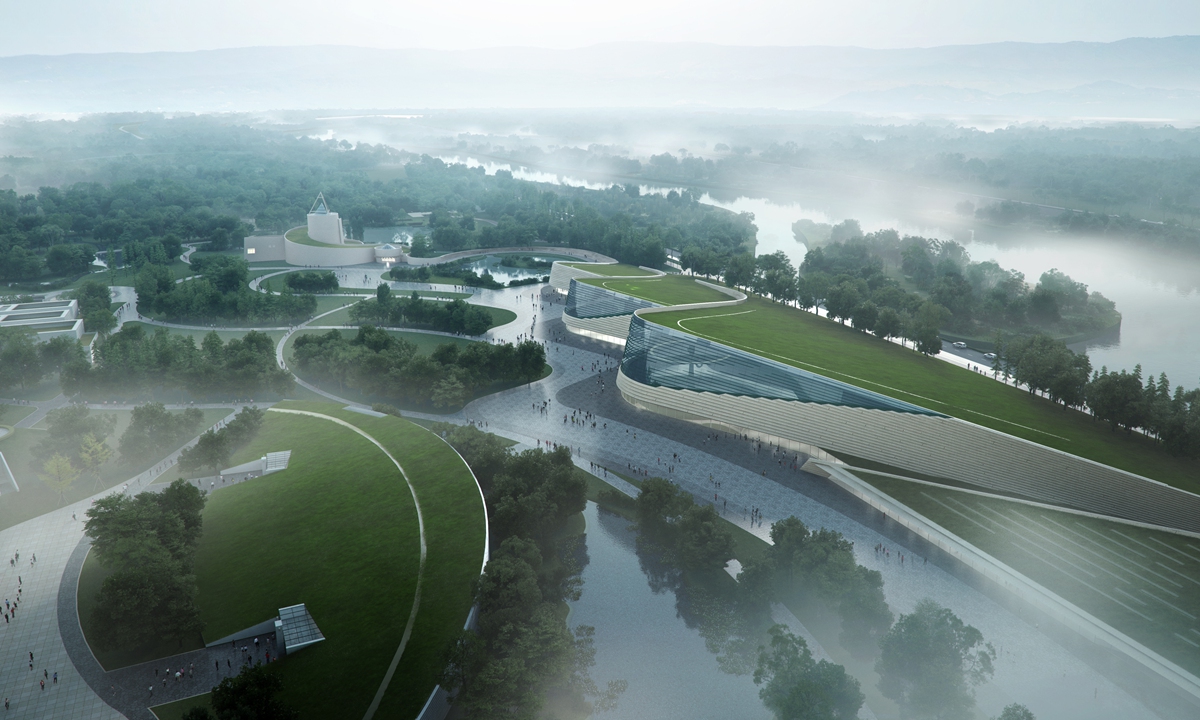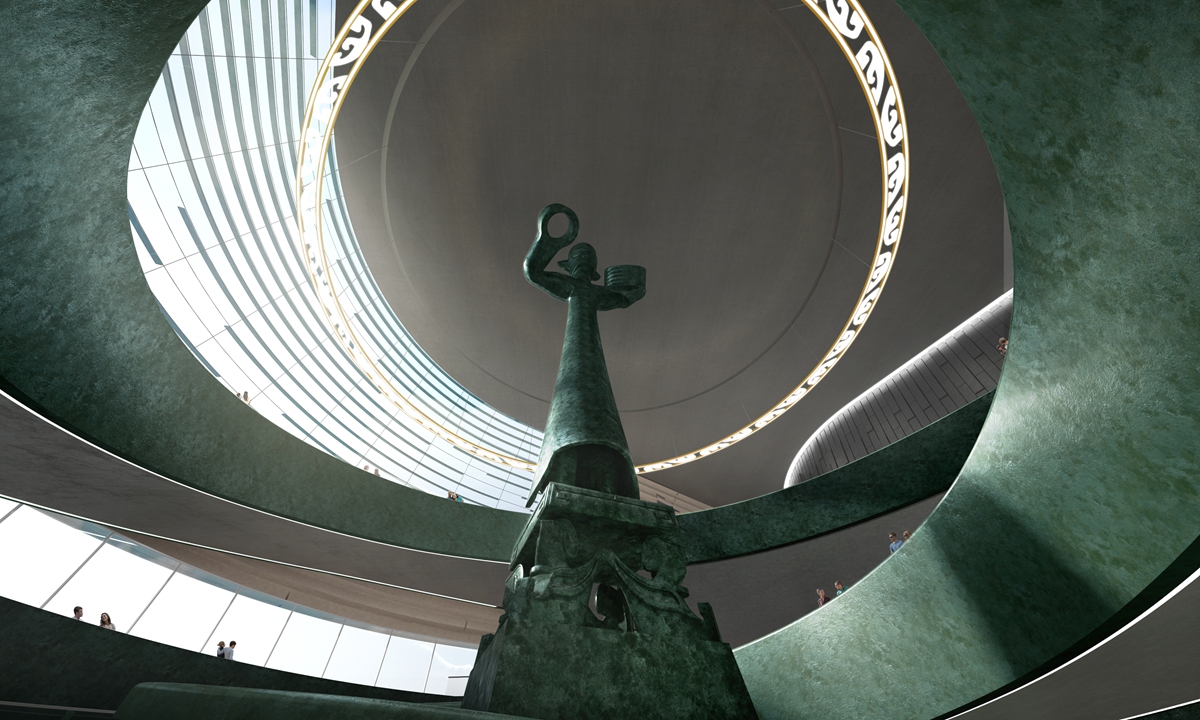ARTS / ART
New home for Sanxingdui’s precious cultural relics
Conversation with the past

Concept art for the new pavilion Photo: Courtesy of China Southwest Architecture

The space-time spiral hall Photo: Courtesy of China Southwest Architecture
Giant bronze masks, bronze standing statues, golden masks and even articles of silk… an increasing number of stunning cultural relics from the mysterious ancient Shu civilization have been excavated from the Sanxingdui Ruins, to the point that it has become time to expand their home beyond the two existing exhibition pavilions and one research pavilion at the Sanxingdui Museum in Southwest China's Sichuan Province.
A team from China Southwest Architecture led by architect Liu Yi stood out from 57 teams from home and abroad to finally win the opportunity to design and construct a new exhibition pavilion at the museum.
Construction began on March 29. Liu told the Global Times that their design has several creative features, including a 200-meter-long exhibition space and the heavy use of bronze for decorative purposes.
"One of the most important goals for us is to give these precious cultural relics from the Sanxingdui Ruins the safest environment facing visitors while also displaying their artistic value to the maximum extent," Liu noted.
According to data released by the China National Cultural Heritage Administration, more than 11,000 cultural relics have been unearthed from the six newly discovered sacrificial pits at the Sanxingdui Ruins, including 870 bronze wares, 510 gold wares, 450 jade wares and 400 ivory carvings.
These cultural relics are waiting for Liu's team, in cooperation with other Chinese and Japanese architects, to make their big budget - around 1 billion yuan ($157.1 million) - design dreams come true.
The new pavilion is expected to be completed in October 2023 and opened to the public at the end of 2023.
New cultural landmark
The Sanxingdui Museum stands on the south bank of the Duck River in Guanghan, Southwest China's Sichuan Province. This is a modern thematic heritage museum for containing, exhibiting and researching thousands of cultural relics from the Sanxingdui Ruins.
Liu's team aims to present a new cultural landmark for Sanxingdui followers.
"The difficult part is that we are trying to establish a new cultural landmark, so we cannot rely on things and craft that have been used before," Liu said, emphasizing the importance of creativity in designing the exhibition pavilion.
The new pavilion will have six regular exhibition halls and one temporary hall. Covering an area of 18,000 square meters, it far exceeds the old exhibition pavilions in scale.
In addition to displaying the precious cultural relics from the Sanxingdui Ruins, the temporary hall will also play a role for exchanges with other museums at home and abroad in bringing a more expansive cultural feast to visitors.
Liu explained that the exhibition halls will have a long-spanning steel structure that does not use any pillars in order to enlarge the hall to the maximum.
"The length of the continuous hall is 200 meters and the width is over 30 meters, so that in the future, the exhibition planners will have more flexibility," Liu said.
This is a creative plan in the architectural design.
Liu mentioned that the Sanxingdui Museum is a heritage museum, so the new exhibition pavilion needs to "hide" in the ruins instead of standing out from the surrounding environment.
The roof of the new pavilion will be covered with sloping soil, so that the building will disappear into the environment. The stone materials used in construction also have this plan in mind.
"Inspired by the mysterious and symbolic eyes on many Sanxingdui cultural relics, the stone materials will be smooth and curved," Liu said, noting that they are still under discussions with manufacturers about how to produce the curved stone surface they want.
"We are trying to use the best technology to build a room for this stunning ancient civilization. This is a conversation with the Shu civilization," Liu noted.
Past and present
The Sanxingdui Museum was founded in August 1992 and opened in October 1997. The existing pavilions were also designed by a team from the China Southwest Architecture led by architect Zheng Guoying.
The design of the new pavilion seeks to pay tribute to the old design, while also integrating with them.
The team analyzed the relationship among the existing bronze pavilion, the new pavilion and the visitor center, and then came up with a design that integrates the visitor center with the new pavilion. The new building will be perpendicular to the bronze pavilion so they can share facilities and complement each other's functions.
In the new pavilion, a huge replica of a 2-meter tall bronze standing statue discovered at the site will stand at the center of a "space-time spiral hall," a circular bronze staircase that spirals down around the standing statue.
"This idea of a space-time spiral originated from the spiral design of the old pavilion, but the previous design made the spiral staircases reach to the sky, so we wondered if we could explore underground," Liu said.
The new spiral hall will extend 10 meters underground, standing for exploring the treasures that were buried there for centuries.
To reach the standard of international first-class museums, Liu's team is working with Japanese architects, who have experience working with advanced technology in the design of Japanese museums, especially those dedicated to history, Liu added.



